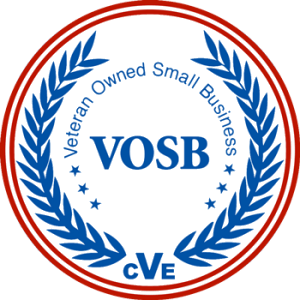Grid-Interactive Efficient Buildings: A National Security Strategy for a More Resilient Grid
Grid-interactive efficient buildings (GEBs) offer several ways to enhance national security, including lowering carbon emissions, making electrical grids more resilient, and balancing electrical loads to save money on utility costs.
Find out how grid-interactive efficient buildings are part of an overall national security strategy that makes more resilient grids and creates a stronger America.
Lower Energy Costs in Federal Buildings
We’ve all heard the mantra of lowering operational costs at federal agencies. Investing in GEB technology reduces energy costs during peak demand times. A typical building has spikes in energy usage from 11 a.m. to 2 p.m., especially in warmer climates during the summer, when HVAC systems run highest to keep the building cool and comfortable.
Energy-efficient buildings alone still see spikes when the electrical load is the greatest. Photovoltaic cells (solar) offer some relief, but they don’t work as well when the sun is lower in the sky.
A combination of a grid-integrated building with energy efficiency, PoE systems, solar, and load flexibility creates an even keel that stores power for peak times that don’t rely on the grid. Batteries can store electricity from the grid in off-peak hours and then use that energy during peak times when power consumption is the highest. Solar cells on rooftops can lower grid usage when the sun is highest in the sky.
Connected Grid-Interactive Efficient Buildings Form a Mini-Grid
Let’s say you have a campus of six buildings in a downtown metropolitan area. The temperature in that area is set to break records for high temperatures for three weeks in a row, which strains an already overtaxed electrical grid. Grid-interactive buildings can utilize electrical cables between buildings to send power to and from buildings using battery backups. Depending on how full the batteries are and how much the staff conserves power, electricity could be maintained for days.
There are real-world applications to this. Phoenix set a record of 31 days in a row of temperatures above 110 degrees in 2023. The utility companies were able to keep up with demand by turning on more turbines. However, not all metro areas will have this luxury. GEBs mitigate climate risk by lowering dependence on fossil fuels and reducing carbon emissions, as well as by mitigating outdated or overburdened power grids.
Hurricanes, wildfires, and tornadoes are also weather-related disasters that can knock out power for days. If your federal building is part of the response to these catastrophic events, maintaining power through grid-interactive efficient buildings can mean the difference between life and death.
What happens if a cyberattack or terrorist attack knocks out power? Grid-interactive efficient buildings can still operate if utility-based power is disabled for any reason. Having robust IT protocols or a managed IT service provider is another way GEBs can make your federal building more secure.
Outfitting GEBs for Optimal Use
Grid-interactive efficient buildings have four main characteristics that are needed to achieve this energy resiliency.
Efficiency: Persistent low energy use alone can save up to 29% of power costs. This comes from a combination of sensors, power over Ethernet (PoE) devices, and infrastructure improvements.
Connectivity: Two-way communication between the building and the grid, flexible technologies, and building occupants, either wirelessly or through Ethernet, is needed for GEB utilization.
Smart technology: Analytics software to gather and parse data from distributed energy sources (DERs), sensors, and controls optimize the efficiency of the building and the comfort of occupants.
Flexibility: Electrical loads must be flexible enough to know where to shift power generation along the distributed energy sources, including on-site solar, the grid, and battery storage, to prevent higher costs of peak times.
All of these facets work through a central building management system (BMS) that your facility management team administers and operates based on your agency’s protocols.
Secure Your Government Building Against Power Grid Issues
Partnering with a PoE and smart building expert like CKC Data Solutions can help make your federal facility more secure through grid-interactive efficient buildings. This type of design can keep your campus secure in various situations.
Call (417) 812-5251 or contact us for a consultation.




